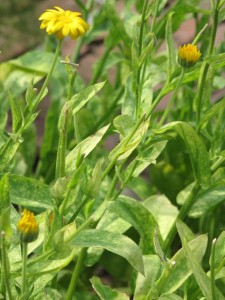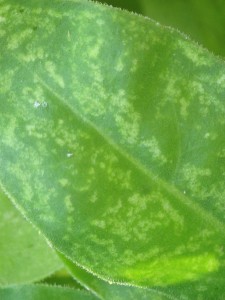Mite versus Mite
Left: A severe infestation of two-spotted mites on a calendula growing in Bonnefont garden. Right: A detail of the damage done by this common hot-weather garden pest, which sucks the chlorophyll from the leaves of the host plant. Photographs by Corey Eilhardt
The hot, dry weather that has us struggling to keep the gardens watered is all too welcome to the two-spotted mite, Tetranychus urticae, a worldwide pest of crop plants, ornamentals, and houseplants that is as much at home in greenhouses and apartments as it is outdoors. Two-spotted mites, along with other members of the Tetranychus family, are commonly known as spider mites. They are arachnids but are more closely related to ticks than to spiders.





